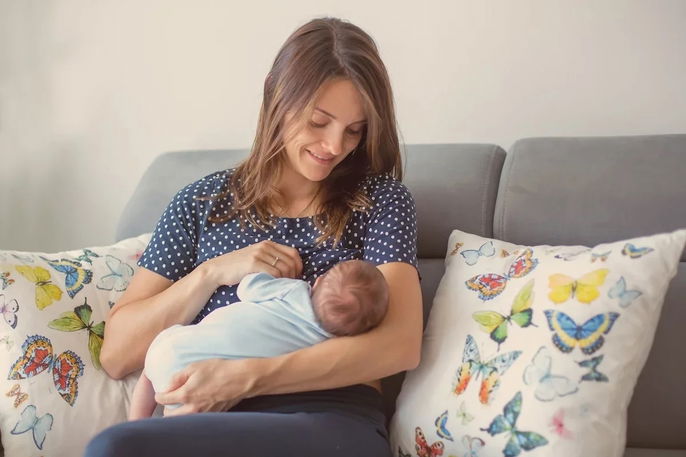Cracked nipples from breastfeeding are most common in the first weeks after birth and are often the result of the baby not latching properly to the breast. They often appear as small cracks or tears in the nipple that may bleed.
Cracked nipples from breastfeeding can be treated by applying drops of breast milk to the nipple, which acts to hydrate the nipple and decrease dryness and burning. Your OBGYN or midwife may also prescribe other ointments to relieve pain and help with healing.
In mild cases, it is important to continue breastfeeding, as human milk provides a baby with the necessary nutrients they need to grow and develop. In more severe cases, it is important to consult your OB provider, pediatrician, or lactation consultant to discuss treatment options and/or alternatives to direct breastfeeding.

Treatment options
The following tips are recommended after each feeding to help heal cracked nipples from breastfeeding:
- Apply a few drops of breast milk, letting it air dry on the nipple. Breast milk is very hydrating and contains natural properties that help the nipple to heal on its own;
- Apply a thin layer of a nipple ointment, like lanolin, to the nipple after breastfeeding, being sure to use a damp cloth to remove any residual ointment prior to the next feeding;
- Air out the breasts for 15 minutes after a feeding, allowing the nipples to dry before putting a shirt or bra back on.
In addition, use gentle soap and water to wash the breasts and pat dry with a soft towel. Next, place breast pads in your bra to keep the nipples dry and avoid infection.
What to avoid
Avoid using alcohol and antiseptic products on the nipple while breastfeeding to avoid causing harm to the baby. Glycerin creams and petroleum jelly (Vaseline) are also contraindicated.
It is important to continue breastfeeding with cracked nipples, while making sure the baby is positioned correctly on the breast and ensuring a proper latch. Apply breast milk or an ointment like lanolin to the nipple to help the nipple heal without causing harm to the baby.
Can I keep breastfeeding?
Yes, the recommendation is to continue breastfeeding in order to prevent discomfort from engorgement (accumulation of milk in the breast). Even if the nipples are bleeding, ingesting milk with a small amount of blood will not cause problems for the baby. Be sure to consult your pediatrician if there is more than scant bleeding.
Incorrect positioning and poor latch are the most common causes of cracked nipples from breastfeeding. Ensuring proper positioning and a good latch is fundamental to preventing and treating cracked nipples.
Preventing cracked nipples
The following steps are recommended to prevent cracked nipples from breastfeeding:
- Apply a few drops of breast milk to the nipple and areola, pressing gently to express a small amount of breast milk from each nipple after a feeding;
- Avoid using creams or ointments on the nipple, unless advised by your OB provider or lactation consultant;
- Use breast pads and a well-fitting nursing bra, as an ill-fitting bra can affect milk supply;
- Go without a bra for several minutes after a feeding in order to let the nipples dry out and prevent the growth of fungi and bacteria.
Cracked nipples are not caused by the baby remaining on the breast for too long, but by an improper latch that needs to be corrected as soon as it is recognized. Your OB provider or a lactation consultant can help you with proper positioning to ensure a good latch. This will help improve milk transfer and prevent discomfort caused by cracked nipples.






























